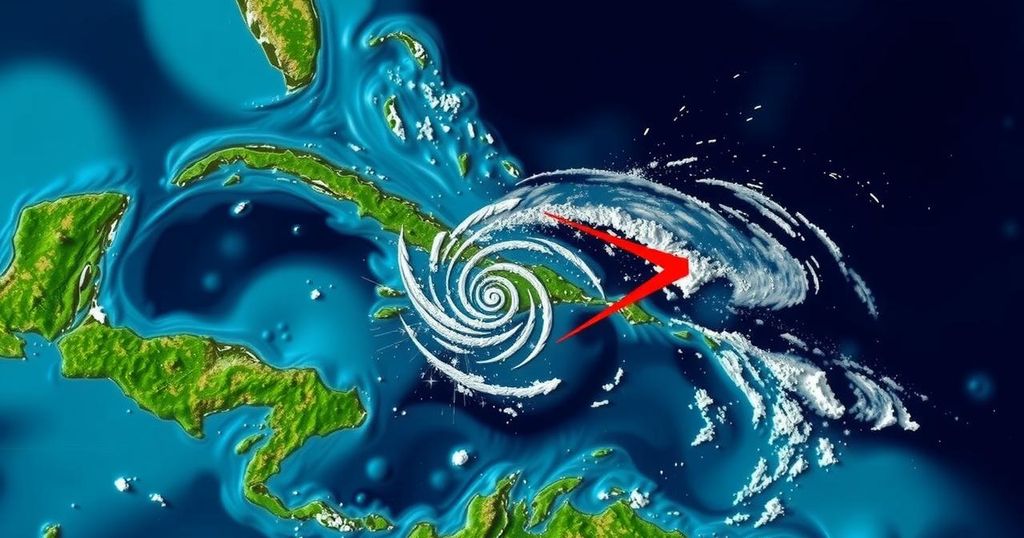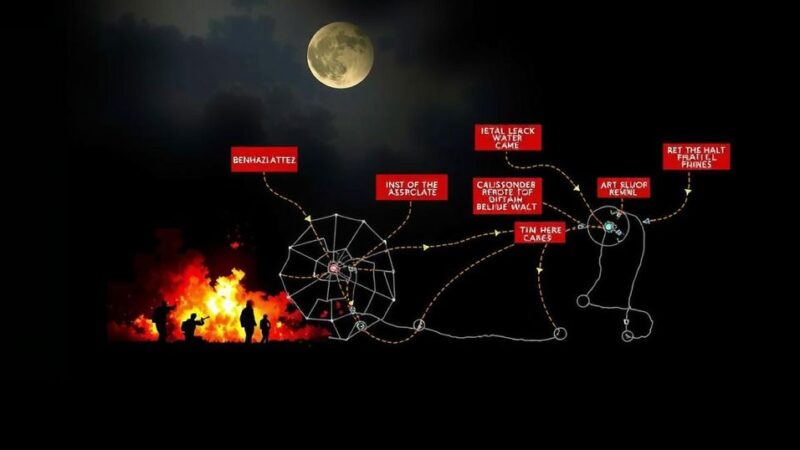Tropical Storm Oscar progressed towards the Bahamas after striking Cuba as a Category 1 hurricane, causing six fatalities and significant rainfall. It is noted for being the smallest recorded hurricane, with forecasts indicating heavy rains across the Bahamas. The storm’s unpredictability has raised concerns about hurricane forecasting methodologies, occurring during an already challenging recovery period in Cuba due to prior power outages.
Tropical Storm Oscar continued its trajectory toward the Bahamas on Tuesday after making landfall in Cuba as a Category 1 hurricane, resulting in the unfortunate deaths of at least six individuals while unleashing significant rainfall across the island, which was already grappling with a widespread power outage. As of Tuesday morning, Oscar was located approximately 45 miles (75 kilometers) south-southeast of Long Island in the Bahamas, with sustained winds recorded at 40 mph (65 kph) and moving in a north-northeast direction at a pace of 12 mph (19 kph), according to data from the National Hurricane Center in Miami. Currently, Oscar is classified as a minimal tropical storm. Forecasters project that between 5 to 8 inches (13 to 20 centimeters) of rain may fall across southeastern parts of the Bahamas, leading to a tropical storm warning for the central and southeastern regions. Remarkably, Oscar has been documented as the smallest hurricane on record, possessing a wind field extending merely 6 miles (10 kilometers). Its unexpected intensification into a hurricane caught meteorologists off guard, particularly given that no forecasting models anticipated such a development. Michael Lowry, a noted hurricane specialist, remarked in an analytical review, “It is not often we see a colossal failure in hurricane forecasting.” In eastern Cuba, Oscar brought heavy rainfall, with reports indicating that some areas received upwards of 15 inches (38 centimeters) on Monday, prompting warnings about the dangers of flooding and potential landslides. The fatalities recorded occurred in Guantánamo province. This event transpired amidst Cuba’s ongoing recovery efforts from a significant blackout that had led to minor protests and a stern governmental advisory regarding disturbances. Oscar is identified as the 15th named storm and the 10th hurricane of the current Atlantic hurricane season, which commenced on June 1 and will conclude on November 30. The National Oceanic and Atmospheric Administration has projected an above-average season, anticipating between 17 to 25 named storms, including four to seven major hurricanes classified as Category 3 or higher. Concurrently, Tropical Storm Kristy remains active over open waters in the Pacific, positioned 375 miles (605 kilometers) west-southwest of Acapulco, Mexico, with expectations of reaching hurricane status by Tuesday evening.
Tropical Storm Oscar highlights the unpredictable nature of tropical cyclones, particularly in the context of an Atlantic hurricane season characterized by warmer ocean temperatures. The expectation of an above-average season raises concerns about the potential for severe weather events. Oscar’s unexpected intensification serves as a reminder of the complexities in weather forecasting and the ramifications that such storms can have on vulnerable regions. The situation is compounded in Cuba by the nation’s recent struggles with power outages, exacerbating the impact of the storm on the populace.
In summary, Tropical Storm Oscar has transitioned from a hurricane to a tropical storm while causing severe rainfall and multiple fatalities in Cuba. The unexpected nature of its intensification raises concerns about forecasting capabilities, particularly as the hurricane season progresses with above-average predictions. As communities in the Bahamas prepare for more rain and potential disturbances, the effects of Oscar underline the importance of preparedness in facing natural disasters.
Original Source: apnews.com






